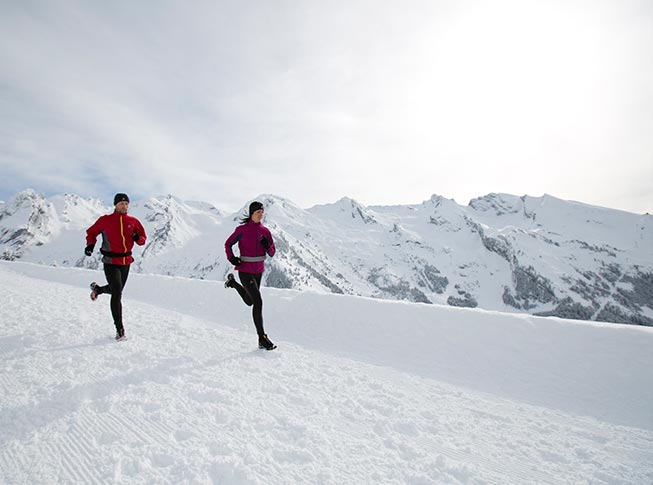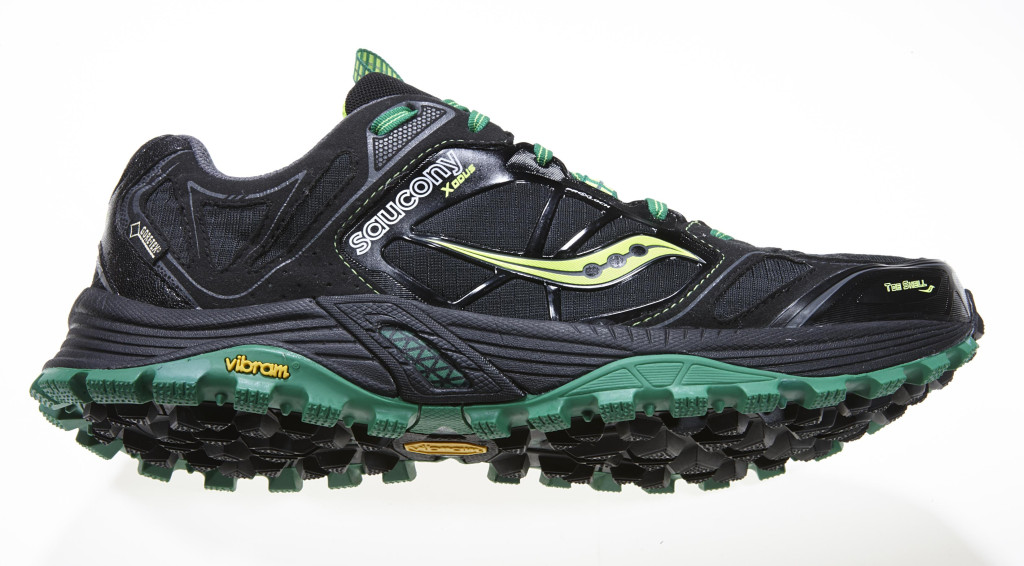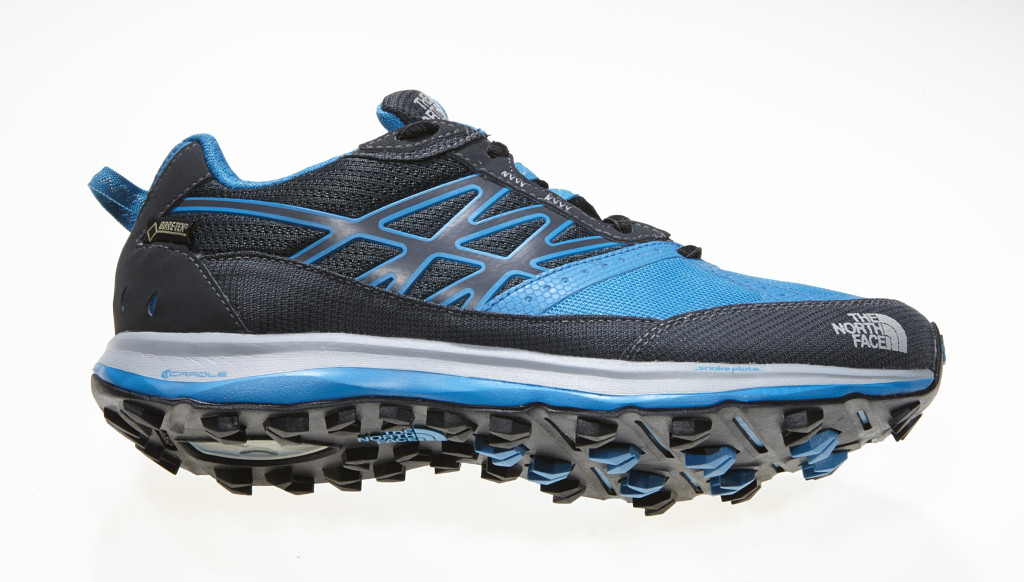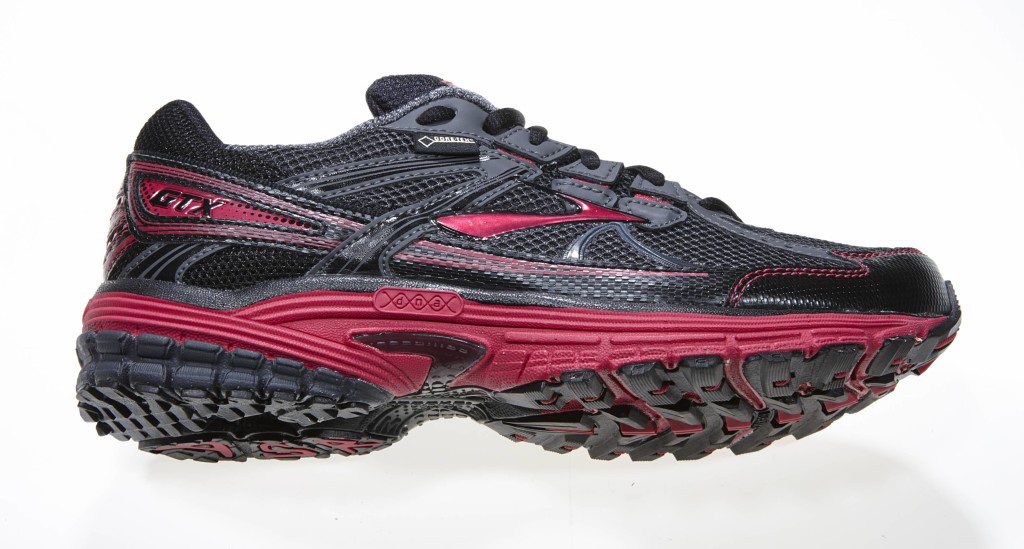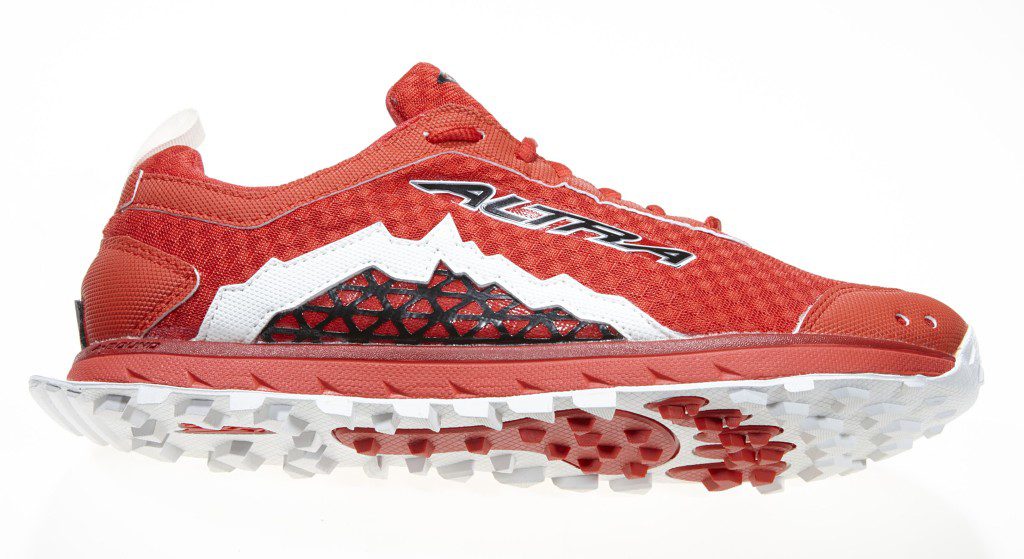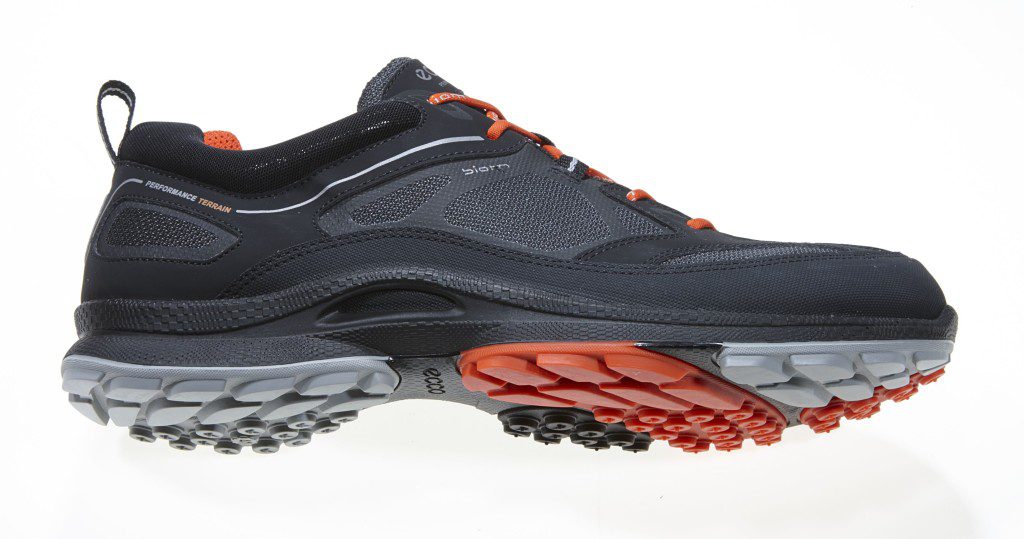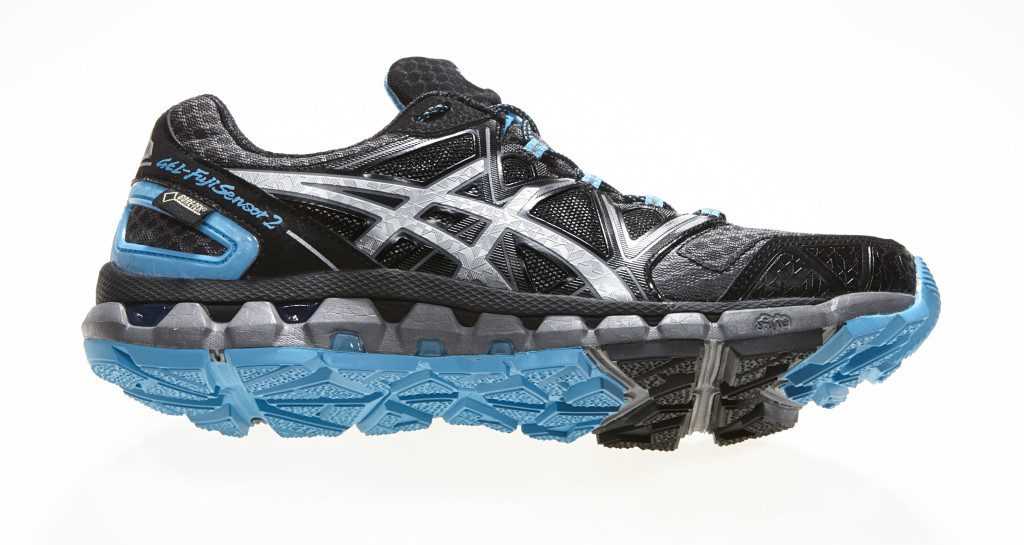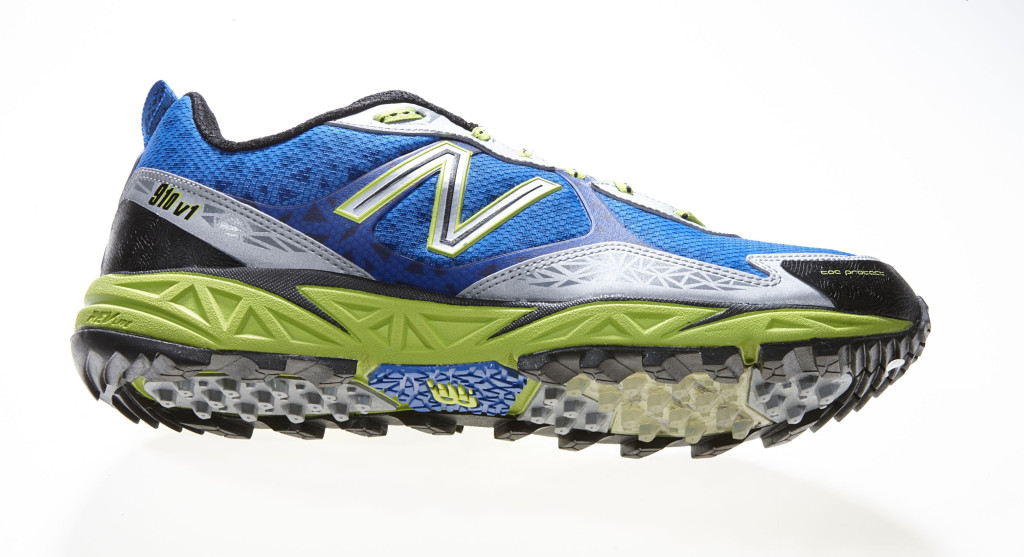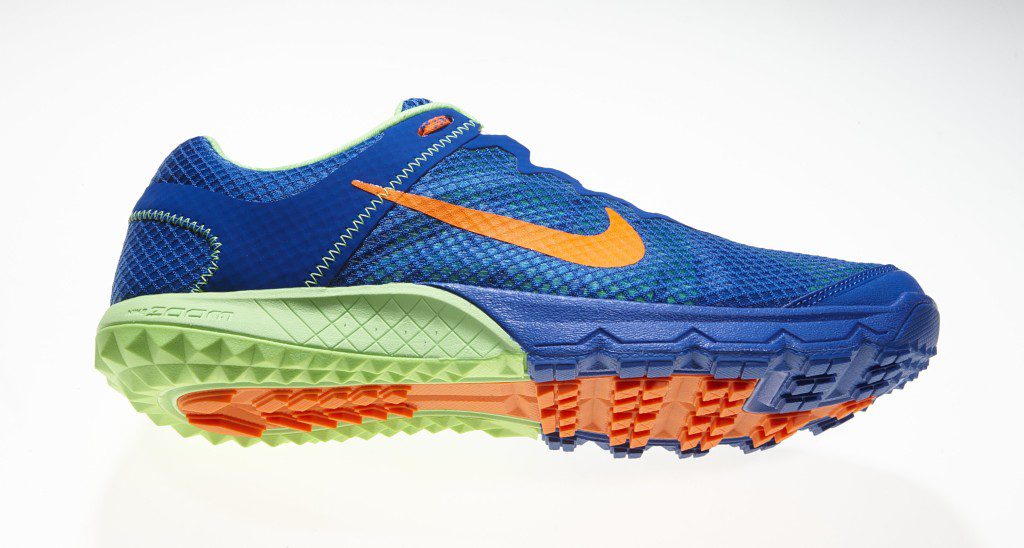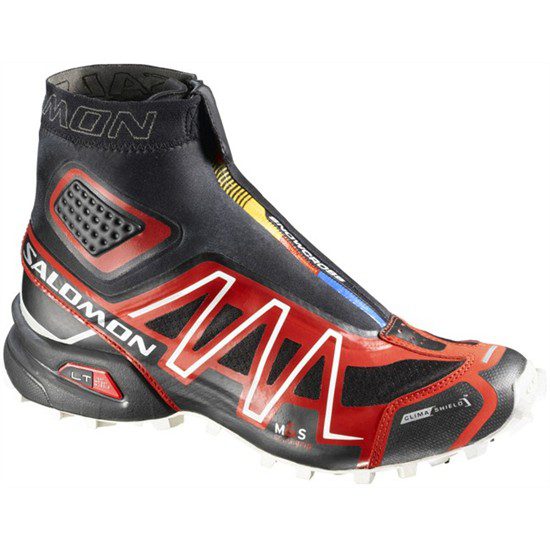2014 Winter Running Shoe Guide
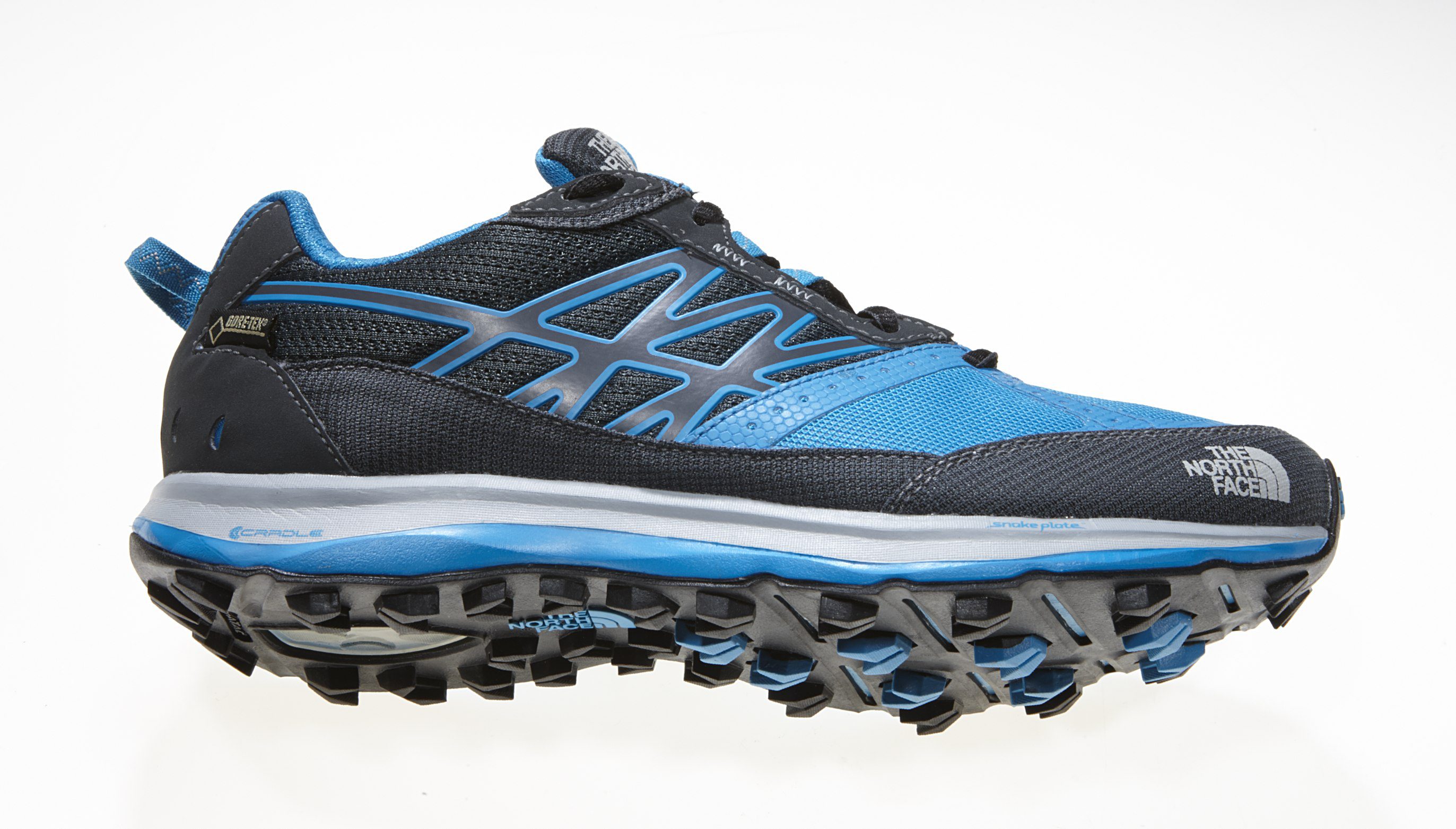
Related Articles
What should I look for in shoes?
While the arrival of cold and slippery winter conditions may have some runners re-evaluating their outdoor training program, experienced Canadian runners simply switch to more winter-specific shoes and continue to log kilometres.
Here are some of this season’s top winter running shoe options to help runners stay fit during the upcoming winter months.
Saucony Xodus 4.0 GTX
$165
(Men’s model shown)
Men’s 337 g (11.9 oz), Women’s 297 g (10.5 oz)
Heel 26 mm Forefoot 22 mm
Built with a full Gore-Tex liner and sporting a shockingly aggressive Vibram outsole, the Xodus 4.0 GTX is the perfect shoe for anyone training in cold, snowy and wet conditions. The shoe maintains the fit and performance of the previous Xodus (4 mm drop and with a hint of stability) ensuring a fast and nimble ride in various conditions. Weather protection is further increased as Saucony extends the Gore-Tex liner to the gusseted tongue. With all this protection from the elements, the Xodus has a surprisingly supple and foot-hugging upper thanks to minimal overlays and careful material choices.
Tester says: “This is go-to shoe when it’s wet and cold and I need the highest level of traction.”
The North Face Ultra Guide GTX
$140
(Women’s model shown)
Men’s 301g (10.6 oz), Women’s 261 g (9.2 oz)
Heel 16 mm Forefoot 8 mm
The Ultra Guide GTX uses a full Gore-Tex liner ensuring complete water, snow and slush protection for winter runners. There is excellent traction in slippery snow conditions thanks to the spikey open-lug tread outsole. The North Faces uses an 8 mm drop that balances the needs of traditional runners with those looking to transition to a more mid-foot strike. For extra stability in challenging conditions, the Ultra Guide GTX rides low-to-the-ground with only a 16 mm heel and 8 mm forefoot.
Tester says: “I loved that this shoe offered excellent weather protection and traction without feeling clunky or heavy.”
Brooks Adrenaline ASR 10 GTX
$140
(Men’s model shown)
Men’s 331 g (11.7 oz), Women’s 306 g (10.8 oz)
Heel 30 mm Forefoot 19 mm
The Adrenaline ASR 10 GTX is a good choice for runners seeking a waterproof stability shoe for winter training. Built with an 11 mm drop and utilizing Brooks’ proprietary DNA cushioning that adapts to a runners stride and weight, the Adrenaline ASR 10 GTX is ideal for larger runners seeking a plush, more traditional ride. While the outsole provides more traction than a conventional road shoe, it still feels light and fast on paved surfaces.
Tester says: “As a bigger runner, I really liked this shoe’s combination of stability, traction, plushness and weather protection.”
Altra Lone Peak 1.5
$135
(Men’s model shown)
Men’s 280 g (9.9 oz), Women’s 252 g (8.9 oz)
Heel 17 mm Forefoot 17 mm
Built on a zero drop platform with a 23 mm ride height, the Lone Peak 1.5 provides minimalist runners with an ideal level of cushioning for longer training runs. An aggressive sticky rubber, open-lug tread outsole offers solid grip in a variety of conditions. Altra employs carefully positioned overlays, which add some structure to the upper while the wide toe box should please many barefoot/minimalist runners. While these shoes lack a waterproof liner, the densely-knit fabric upper is wind resistant and highly breathable.
Tester says: “As a barefoot runner I like how these shoes provide a little bit more cushioning for grinding tough winter runs.”
Pearl Izumi EM Trail N1
$140
(Men’s model shown)
Men’s 272 g (9.6 oz), Women’s 241 g (8.5 oz)
Heel 23 mm Forefoot 16 mm
Runners who are seeking a bit more traction for winter surfaces but are reticent about using heavy or clunky trail shoes will be impressed with the Pearl Izumi EM Trail N1. Built with a lightweight seamless upper, this shoe delivers an exceptional foot-hugging fit. Cushioning is also top-notch thanks Pear Izumi’s smooth riding dynamic offset midsole. For traction, the EM Trail N1uses an aggressive open-lug tread outsole that does a great job of providing grip without making the shoe feel slow or heavy. The seamless upper is not waterproof, but it is highly breathable and provides some protection against wind.
Tester says: “These shoes felt fast and nimble and would be good choice for neutral runners training in lighter winter conditions.”
Ecco Biom Ultra Quest GTX
$190
(Men’s model shown)
Men’s g 340 9 (12 oz), Women’s g 300 g (10.5 oz)
Heel 26 mm Forefoot 16 mm
The understated-looking Biom Ultra Quest GTX offers some compelling features for winter runners. The most obvious would be the use of a Gore-Tex liner that makes the shoe totally waterproof while still maintaining breathability. A two-part injection molded sole unit uses long lasting polyurethane for the midsole and grippy rubber for the outsole. This combination creates a unique ride that is surprisingly firm and responsive, but may also require a greater period of adjustment from some runners.
Tester says: “Once I adjusted to the firmer midsole, I enjoyed the shoes’ responsive ride and weather protection. It looks great.”
Asics GEL-Fuji Sensor 2 G-TX
$189
(Women’s model shown)
Men’s 362 g (12.8 oz), Women’s 309 g (10.9 oz)
Heel 25 mm Forefoot 19 mm
The new GEL-Fuji Sensor 2 G-TX uses a full Gore-Tex upper for complete water protection while still retaining breathability. Asics uses a double-density midsole that has a softer layer on top as well as a GEL pod in the heel. Together these cushioning technologies create a surprisingly plush ride. A full ground-contact outsole ensures greater stability on slipper terrain and the mid-size multi-directional lugs deliver solid traction without adding excessive weight or comprising the smooth ride. Carefully positioned overlays add structure to the upper while maintaining the foot-hugging fit.
Tester says: “This shoe impressed me with its excellent weather protection, cushioning and the ride was really smooth.”
New Balance 910 V1
$140
(Men’s model shown)
Men’s 292 g (10.3 oz), Women’s 257 g (9.1 oz)
Heel 26 mm Forefoot 19 mm
With the 910 V1, New Balance has created a great cushioned shoe for training in slippery conditions. New balance uses their RevLite foam midsole that provides excellent cushioning while remaining surprisingly light, durable and responsive. The outsole consists of a series of small aggressive lugs that bite reassuringly into any softer surface but avoid feeling slow on harder paved terrain. An 8 mm drop encourages a faster mid-foot strike without alienating runners seeking a more traditional ride. As the upper is not waterproof, this shoe is better suited for dry, cold conditions.
Tester says: “This was very nimble shoe with great cushioning that also offered excellent traction in slippery conditions.”
Nike Zoom Wildhorse
$135
(Men’s model shown)
Men’s 238 g (8.4 oz), Women’s 221 g (7.8 oz)
Heel 23 mm Forefoot 19 mm
With its 4 mm drop and highly cushioned double-density foam midsole, the Nike Zoom Wildhorse is an appealing option for mid-foot runners wanting protection during long runs. Nike uses its unique Dynamic Flywireupper construction that provides excellent mid-foot wrap while remaining light and breathable. The small lug tread outsole is surprisingly grippy and transitions nicely to dry paved surfaces. While the non-waterproof upper is not ideal for wet or slushy conditions, it does provide good ventilation and breathability during cool and dry training runs.
Tester says: “I loved the cushioning and light weight, as well as it’s wild look.”
Salomon Snowcross CS
$200
(Unisex)
366 g (12.9 oz)
Heel 20 mm Forefoot 9 mm
For those looking for the ultimate winter-proof shoe. The Snowcross CS’s extreme design features a mean studded tread that will grab onto black ice and tear through slush and snow. The built-in gaiter sleeve keeps snow and muck from seeping in and the padding along the outside of the ankle protects from unexpected collisions with ice or rocks. The Snowcross CS feels remarkably light for its bulk, but there is a trade-off in mobility that can be found in a more conventional winter running shoe. For those living in, say, Toronto, Vancouver or Halifax, the Snowcross CS is probably more shoe than needed. But for those looking to stay fit living in a more extreme winter climate, this shoe will keep you training outdoor 365 days a year.
Tester says: “This shoe handled everything I threw at it, including running across a frozen lake and through knee-high snowy trails. It kept my feet warm and dry, but didn’t feel too bulky.”
